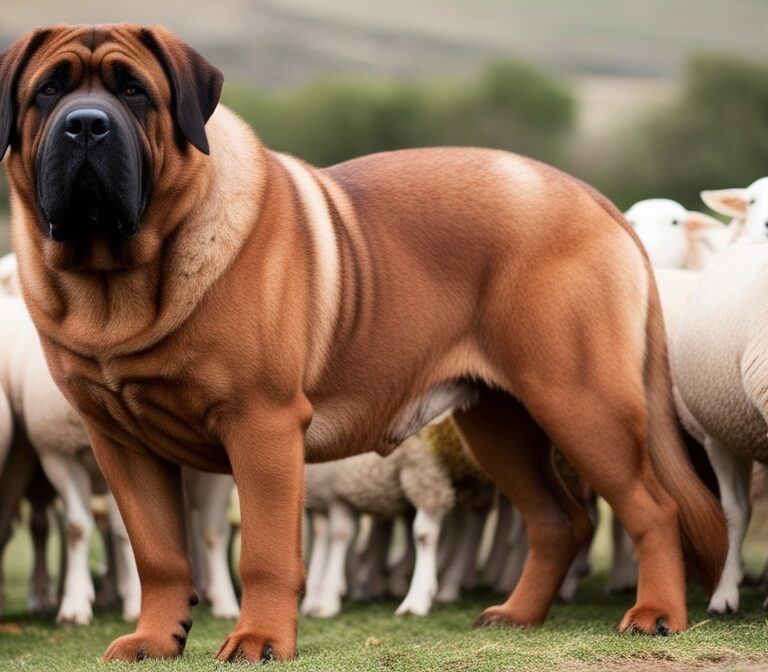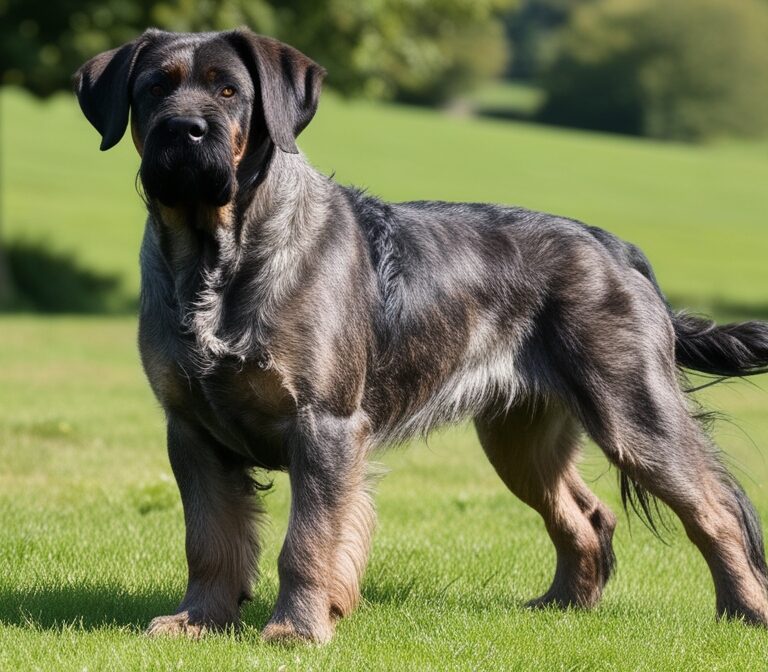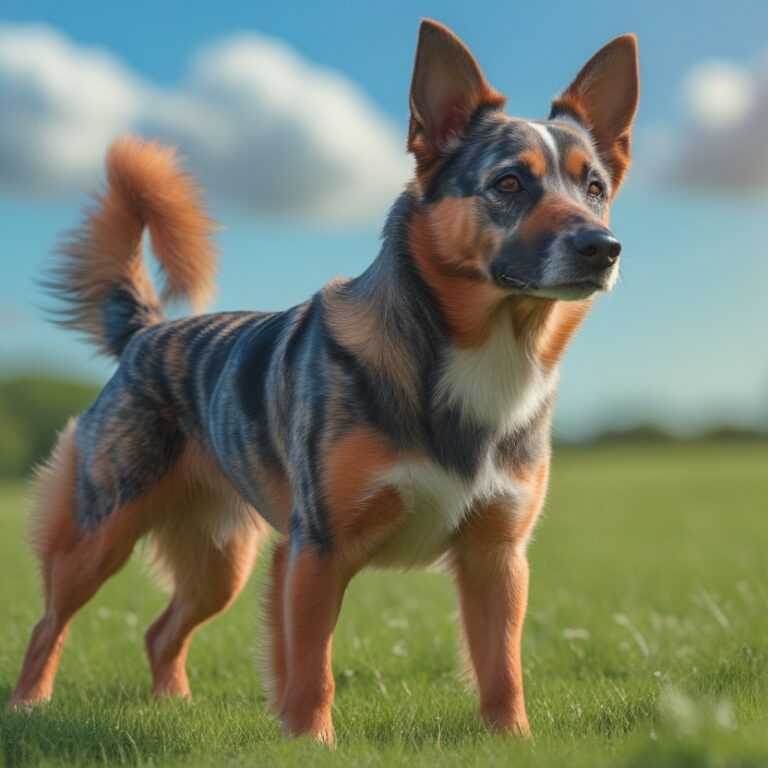Spanish Water Dog: Complete Breed Guide

Introduction to the Spanish Water Dog
The Spanish Water Dog (SWD) is a medium-sized herding and working dog breed originating from Spain, well-known for its curly, wool-like coat and versatile skills. Classified by the American Kennel Club (AKC) under the herding group, the breed has gained popularity worldwide for being both a working companion and a family pet.
What makes the Spanish Water Dog stand out is its unique ability to adapt to multiple roles. Historically, it was used as a sheepdog, cattle herder, and water retriever, showcasing both endurance and intelligence. Today, it continues to be valued for its athletic build, hypoallergenic coat, and affectionate temperament.
People often search for this breed with queries such as “Spanish Water Dog temperament,” “Spanish Water Dog hypoallergenic qualities,” or “Spanish Water Dog puppies for sale.” These searches indicate high interest from families, allergy-sensitive individuals, and active dog owners seeking a trainable, loyal, and adaptable pet.
In this guide, we will explore the breed’s history, physical traits, grooming needs, health considerations, temperament, and modern roles. By the end, you will have a comprehensive understanding of whether the Spanish Water Dog is the right breed for you.
History and Origin of the Spanish Water Dog
The origins of the Spanish Water Dog can be traced back centuries to the Andalusia region in southern Spain. Historical evidence suggests that sheepdogs with curly coats were brought by traders from Turkey or North Africa, later adapted by Spanish shepherds and fishermen.
The breed became a dual-purpose farm dog, excelling both on land and in water. In rural Spain, the SWD was commonly known as the “Perro de Agua Español” (literally “Spanish Water Dog”), and it was used for:
- Herding sheep and goats in mountainous regions
- Driving cattle between pastures
- Retrieving ducks and fish for fishermen
Its versatility was unmatched—few breeds could herd livestock in rugged terrain and then dive into rivers to retrieve nets or lost fish.
The breed was officially recognized by the Fédération Cynologique Internationale (FCI) in 1985 and later by the AKC in 2005, joining the Herding Group. Today, the SWD is still a working dog in Spain, but it has also become a beloved companion in the United States, United Kingdom, and beyond.
Classification and Breed Group
The Spanish Water Dog is classified under the Herding Group by the AKC, but its roles go far beyond herding. Many kennel clubs, including the UK Kennel Club and the Canadian Kennel Club, acknowledge its multi-purpose working nature.
Breed classifications include:
- Herding Dog – Primarily used for guiding sheep and cattle.
- Water Dog – Excellent swimmer and retriever.
- Working Farm Dog – Used in agricultural settings.
Compared to similar breeds like the Portuguese Water Dog and the Lagotto Romagnolo, the Spanish Water Dog is more strongly associated with herding livestock than being solely a water retriever.
This classification impacts training methods, exercise needs, and suitability for owners. A herding dog requires mental stimulation, consistent tasks, and daily structured activity, making the SWD better suited for active families, athletes, and farmers than sedentary households.
Physical Characteristics
The Spanish Water Dog is a medium-sized, athletic, and well-proportioned breed with a curly coat that distinguishes it from most other herding breeds. According to the AKC breed standard, the average size and weight are:
- Males: 17.5–19.75 inches tall, 40–49 pounds
- Females: 15.75–18 inches tall, 31–40 pounds
The most notable feature is its curly or corded coat, which should never be brushed. Instead, it grows in tight curls, often forming cords similar to a Puli or Komondor, though usually shorter. This coat is hypoallergenic and designed to protect the dog from both harsh climates and water exposure.
Coat colors include:
- Solid black, brown, beige, or white
- Bicolor combinations (e.g., black and white, brown and white)
- Rare tricolor patterns
Other distinct physical traits include strong musculature, a deep chest, floppy ears, and a lively expression. Unlike many breeds, the SWD’s tail is often docked in Spain, though this practice is less common in other countries.
Its athletic build and waterproof coat make it ideally suited for herding, swimming, and agility sports.
Temperament and Personality
The Spanish Water Dog is widely admired for its intelligent, loyal, and affectionate temperament. As a working and herding breed, it was bred to think independently, making it both highly trainable and strong-willed. Owners often describe this dog as diligent, athletic, and eager to please when given proper structure.
One of its standout traits is loyalty. The SWD bonds closely with its family and often develops a strong attachment to one person in particular. This makes it an excellent companion dog but also means it can be wary of strangers if not properly socialized. Early exposure to people, dogs, and different environments helps reduce shyness and prevents overprotective tendencies.
The breed’s intelligence allows it to excel in training and canine sports such as obedience trials, agility competitions, and herding events. However, intelligence also comes with a downside—boredom can lead to destructive behaviors if the dog lacks physical or mental stimulation. Providing interactive toys, puzzle feeders, and structured activities keeps this breed engaged.
As a family dog, the Spanish Water Dog is affectionate and playful with children, though supervision is advised with very young kids because of its natural herding instincts (nipping or circling). With other pets, it generally coexists well, especially if introduced early, though it may try to herd smaller animals.
In summary, the Spanish Water Dog’s personality can be described as:
- Intelligent – quick learner and problem solver.
- Loyal – deeply bonded with its family.
- Athletic – thrives on exercise and outdoor adventures.
- Protective – naturally cautious with strangers.
- Affectionate – enjoys companionship and family time.
For the right owner, this temperament makes the breed a devoted companion and reliable worker.
Hypoallergenic Qualities
A key reason many people are drawn to the Spanish Water Dog is its reputation as a hypoallergenic breed. While no dog is 100% hypoallergenic, the SWD produces significantly less dander and shedding compared to most breeds, making it a better choice for people with mild to moderate dog allergies.
The curly, wool-like coat traps dander and prevents it from dispersing into the environment. Unlike double-coated breeds, the SWD has a single coat that grows continuously. This reduces seasonal shedding and lowers the spread of allergens around the home.
However, being hypoallergenic doesn’t mean maintenance-free. Owners must manage coat care to keep allergies at bay:
- Regular trimming every few months helps prevent matting.
- Bathing every 4–6 weeks removes dander and dirt.
- Avoid brushing, as this disrupts the natural curl structure and spreads dander.
For allergy-sensitive households, keeping the dog’s bedding and living areas clean is just as important as grooming. Using a HEPA filter vacuum and washing fabrics frequently further minimizes allergens.
Compared to breeds like the Poodle or Portuguese Water Dog, the SWD offers similar allergy-friendly qualities while maintaining a distinct working-dog temperament. This combination makes it appealing for families wanting a low-shedding, active companion.
Grooming Needs
The Spanish Water Dog’s coat is one of its most unique features—and also one of the most misunderstood. Unlike fluffy or silky-coated breeds, the SWD has tight curls that form cords naturally over time. The coat should never be brushed or combed, as this disrupts the natural curl structure and can lead to frizzing.
Key grooming guidelines include:
- Clipping once or twice a year: Most owners choose to clip the coat to a uniform length of 1–2 inches, which helps manage hygiene and prevents overheating.
- Bathing: Every 4–6 weeks is ideal, using mild dog shampoo. After bathing, the coat should air-dry naturally to preserve curls.
- Ear cleaning: Floppy ears make the breed prone to ear infections, so weekly cleaning is essential.
- Nail trimming: Every 3–4 weeks to prevent overgrowth and discomfort.
Unlike other breeds, the SWD doesn’t require frequent professional grooming if the owner learns proper clipping techniques. Many working dogs in Spain are simply clipped once per year at the start of summer to keep them cool and clean.
Another important point: the coat is functional, not aesthetic. It serves as insulation against both cold water and hot climates, while also protecting the dog from thorny terrain when herding. Owners should focus on health and practicality over style cuts often seen in show dogs.
Proper grooming not only keeps the dog comfortable but also preserves its hypoallergenic benefits. Families who respect the coat’s natural state will find grooming surprisingly simple compared to breeds that require daily brushing.
Exercise Requirements
The Spanish Water Dog is an athletic, high-energy breed that thrives on daily exercise and mental stimulation. As a herding dog, it was bred to work tirelessly across farms and fields, meaning that modern pet owners must provide at least 60–90 minutes of vigorous activity daily.
Ideal exercise routines include:
- Long walks or runs – At least 2 per day.
- Swimming – Naturally strong swimmers, they excel in lakes, rivers, or pools.
- Agility training – Perfect for engaging their athleticism and intelligence.
- Fetch and frisbee – Great outlets for energy.
- Herding trials – Many clubs offer herding practice, which is instinctively rewarding.
Mental exercise is just as important as physical activity. Without mental stimulation, the SWD may resort to digging, chewing, or herding family members. Puzzle feeders, scent work, and obedience drills provide necessary brain challenges.
Unlike couch-potato breeds, the SWD is not well-suited to sedentary households. Lack of exercise often results in behavioral issues such as barking, restlessness, or destructive habits. However, in active homes, it becomes a joyful, eager companion always ready for the next adventure.
Because of its working-dog heritage, the breed adapts especially well to families who enjoy outdoor lifestyles, hiking, camping, and sports. Owners who invest time in structured activity will find the SWD’s athletic nature both rewarding and inspiring.
Training the Spanish Water Dog
Training a Spanish Water Dog is both rewarding and challenging due to its combination of high intelligence and strong independence. The breed thrives under positive reinforcement techniques such as praise, treats, and play. Harsh corrections or punishment often backfire, leading to stubbornness or avoidance.
Early socialization is essential. Puppies should be introduced to a variety of people, environments, and situations between 8–16 weeks of age. This prevents shyness and ensures the dog grows into a well-adjusted adult.
Basic obedience commands—sit, stay, come, and heel—should be taught early. From there, the breed excels in advanced training, including agility courses, search and rescue exercises, and herding trials. Because of its quick learning ability, the SWD is often compared to the Border Collie in trainability, though it can be more reserved in temperament.
Training tips include:
- Keep sessions short and engaging (10–15 minutes).
- Rotate activities to avoid boredom.
- Use toys and games as motivators, not just food.
- Channel natural instincts through structured herding or scent work.
One unique challenge is the SWD’s natural protective streak. Without proper guidance, it may become overly suspicious of strangers or territorial. Consistent exposure to guests, new places, and controlled interactions helps balance protection with sociability.
When properly trained, the Spanish Water Dog is a versatile performer in competitive sports, a reliable farm helper, and a well-mannered family member. Owners who enjoy training will find this breed one of the most rewarding companions available.
Conclusion
The Spanish Water Dog (SWD) is much more than just a rare, curly-coated breed—it is a centuries-old working dog with a strong history in herding, retrieving, and farming. Its combination of intelligence, loyalty, and athleticism has made it one of the most versatile dogs recognized by kennel clubs worldwide, including the AKC, FCI, and UK Kennel Club.
One of the breed’s most valuable traits is its hypoallergenic coat, which makes it suitable for allergy-sensitive households while also providing natural protection against weather, water, and rugged terrain. The coat requires unique grooming practices—clipping instead of brushing—but this is a manageable routine for committed owners.
When it comes to temperament, the Spanish Water Dog strikes a balance between affectionate family companion and focused working partner. Its strong loyalty and protectiveness make it an excellent guardian for families, though socialization is crucial to prevent over-cautiousness around strangers. Its intelligence means that owners must invest in consistent training, daily exercise, and mental challenges to keep it happy.
This is not a breed for sedentary lifestyles. The SWD thrives in active households, especially with owners who enjoy hiking, swimming, agility, or dog sports. Without sufficient stimulation, the dog may develop behavioral issues such as restlessness or excessive barking. However, for families, farmers, or athletes seeking a devoted, athletic, and allergy-friendly dog, the SWD offers unmatched companionship.
From a practical standpoint, ownership comes with moderate costs, including grooming, training, and veterinary care. Puppies can be expensive due to the breed’s rarity, but adopting through rescue organizations or breed clubs is also a possibility.
Compared to similar breeds like the Portuguese Water Dog or Lagotto Romagnolo, the SWD distinguishes itself with its herding instincts and more reserved, thoughtful nature. For those who appreciate a dog with both work ethic and family loyalty, this breed is a perfect match.
In conclusion:
- The Spanish Water Dog is intelligent, athletic, and affectionate.
- It is hypoallergenic, making it appealing to allergy-sensitive owners.
- It requires structured exercise, consistent training, and early socialization.
- It is best suited for active families, farmers, and outdoor enthusiasts.
- Its heritage and versatility make it one of the most unique dogs in the herding group.
For anyone searching for a devoted companion with working capabilities and family loyalty, the Spanish Water Dog is not just a pet—it’s a lifetime partner with a rich history and a vibrant personality.





